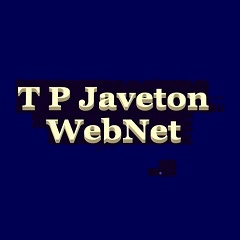Of your resume’s uniqueness
In view of the fact that a resume is limited to only one or two-pages in length, and yet must summarize a person’s career objectives, professional experiences/achievements and educational background, very important that you present a well-written resume that is also well formatted and free of errors. What may be as important, however, is to make it stand out from resumes of other candidates; and to do so you should consider the information in your resume carefully and make sure that it is unique to you (uniquely yours?).
That having been said, the following suggestions are provided in the way of tips on how you can go about making your resume unique to you:
Customize your career objective
To best accomplish the customization of your career objective, you should think of your overall resume as a sales tool in which your career objective is your opening statement. You want your potential employer to know what you want, not just restate what other people say they want; so state your commitment to your career goal, because if you are unsure of what you want, how is your employer expected to believe that you really want the job at their organization, and not that you are just applying because you want to get out of your current work environment?
Don’t be afraid to state what you want from a job and from an organization, because while you want to state your commitment, you also want to show that you are willing to take action to achieve your goal. Indicate what direction or action you are willing to take in order to accomplish your career objective; and be specific about what you are looking for in a work situation.
functional and chronological resumes
While you can say that you are looking for a “challenging” environment, this doesn’t mean anything to your potential employer, as people define challenges in various ways. So avoid using generic terms that are too broad defined. Simply state what you want, and what you are willing to do to get it, and in most cases that will be enough to give any potential employer a good enough idea of who you are and what you want.
Highlight best elements of your experience
This may be the most commonly overlooked aspect of writing a resume; understanding of course, that the entire professional experience section on your resume is, and should be, unique to you so you should take advantage of that particular aspect. Also, try to use power words wherever you can to list your responsibilities, while making sure that you have a winning attitude with each statement.
Focus on those responsibilities that best describe the skills you acquired while in each job that make you the most qualified candidate for the position you are seeking; and quantify your responsibilities when possible to showcase to your potential employer that you are driven by results, and you are capable of exceeding goals; but don’t be shy about promoting your qualifications, because you earned them with your hard work and dedication.
Personalize your cover letter
The biggest mistake many professionals make is not spending enough time on their cover letter; but your cover letter should receive the same attention as your resume as they go hand-in-hand. Address your cover letter to the appropriate person at the company (contact info is typically listed in the job description); and make sure to mention what position you are applying for, while demonstrating how well the information in your resume aligns with the job requirements.
about resumes, cover letters and interviews
Your cover letter also allows you to address any information in your resume that may raise questions; so take the time to do it right, as you don’t want your resume discarded because you chose not to create a uniquely personalized cover letter. Overall, make sure that your cover letter supports your resume and presents you as the most qualified candidate for the job.


